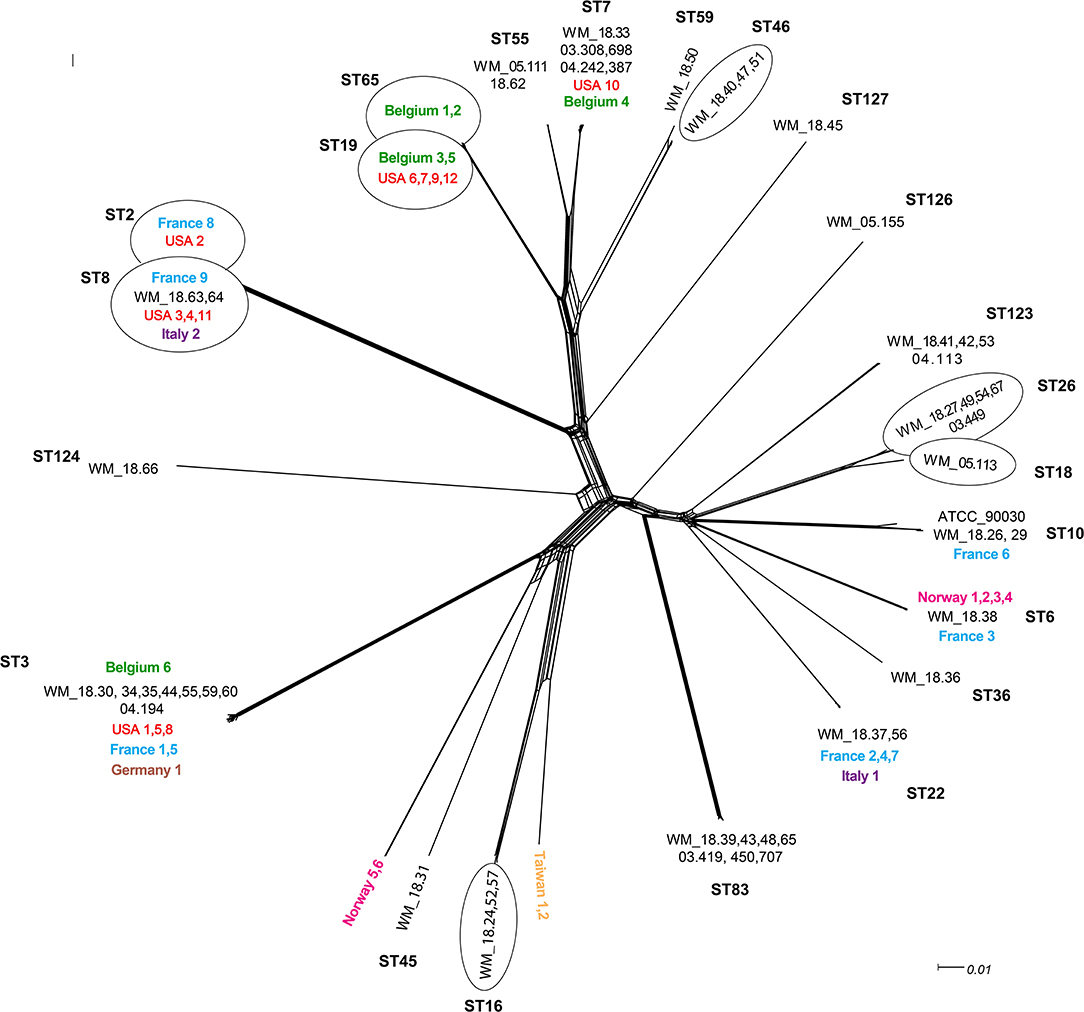- 1Centre for Infectious Diseases and Microbiology-Public Health, Westmead Hospital, Sydney, NSW, Australia
- 2Westmead Clinical School, Faculty of Medicine and Health, The University of Sydney, Sydney, NSW, Australia
- 3Centre for Infectious Diseases and Microbiology, Westmead Institute for Medical Research, Westmead, NSW, Australia
- 4Marie Bashir Institute for Emerging Infectious Diseases and Biosecurity, The University of Sydney, Sydney, NSW, Australia
- 5Department of Infectious Diseases and Microbiology, New South Wales Health Pathology, Royal Prince Alfred Hospital, Faculty of Medicine and Health, The University of Sydney, Sydney, NSW, Australia
- 6Centre for Infectious Diseases and Microbiology Laboratory Services, ICPMR, New South Wales Health Pathology, Westmead Hospital, Sydney, NSW, Australia
- 7National Mycology Reference Centre, SA Pathology, Adelaide, SA, Australia
- 8Department of Microbiology and Infectious Diseases, Canberra Hospital & Health Services, Australian National University Medical School, Canberra, ACT, Australia
- 9Department of Microbiology and Infectious Diseases, St Vincent's Hospital, Sydney, NSW, Australia
- 10Department of Infectious Diseases, Alfred Health and Monash University, Melbourne, VIC, Australia
- 11Department of Microbiology, PathWest Laboratory Medicine, Queen Elizabeth II Medical Centre, Perth, WA, Australia
- 12Department of Microbiology and Infectious Diseases, Royal North Shore Hospital, Sydney, NSW, Australia
- 13National Centre for Infections in Cancer, Peter MacCallum Cancer Centre, Melbourne, VIC, Australia
A Corrigendum on
Whole Genome Sequencing of Australian Candida glabrata Isolates Reveals Genetic Diversity and Novel Sequence Types
by Biswas, C., Marcelino, V. R., Van Hal, S., Halliday, C., Martinez, E., Wang, Q., et al. (2018). Front. Microbiol. 9:2946. doi: 10.3389/fmicb.2018.02946
In the original article, there were a small number of transcription errors in Figure 1 as published.
There are:
The label “Norway 6” (at position 6 o'clock) was incorrectly “positioned” with isolate WM_18.31 (ST45) and should have been positioned with “Norway 5.” This is now corrected.
Isolates Taiwan 1 and Taiwan 2 should be positioned together. In addition, the isolate WM_18.57 was inadvertently omitted from the ST16 “bubble.”
Isolate WM_18.51 should have been placed in the group under ST46 instead of ST59. The corrected Figure 1 appears below.

Figure 1. Unrooted network tree depicting the association between Australian Candida glabrata isolates and international isolates from seven countries based on their whole genome sequences. All clusters in the tree have been represented by different sequence types (STs) except Norway 5, Norway 6, Taiwan 1 and Taiwan 2 which have previously unassigned (new) STs. New sequence types (STs) from Australia are ST123, ST124, ST126 and ST127. Isolates representing a particular ST in branches, which contain multiple STs, are put in circles. The colors depict isolates from different countries: Black, Australia; Green, Belgium; Blue, France; Brown, Germany; Purple, Italy; Pink, Norway; Yellow, Taiwan; Red, United States. The Australian isolates have names starting with WM_ and the international isolates where named according to the country of origin, all followed by a numerical scheme. For isolates from same country in a cluster, the country name was followed by numerical identities of the isolates separated by commas. For example, in ST7 cluster, WM_18.33, 03.308,689, 04.242,387 (where 18, 03 and 04 are years of isolation followed by isolate number).
The authors apologize for these errors and state that they do not change the scientific findings of the article in any way. The original article has been updated.
Keywords: whole genome sequencing, Candida glabrata, MLST, sequence type, Australia
Citation: Biswas C, Marcelino VR, Van Hal S, Halliday C, Martinez E, Wang Q, Kidd S, Kennedy K, Marriott D, Morrissey CO, Arthur I, Weeks K, Slavin MA, Sorrell TC, Sintchenko V, Meyer W and Chen SC-A (2019) Corrigendum: Whole Genome Sequencing of Australian Candida glabrata Isolates Reveals Genetic Diversity and Novel Sequence Types. Front. Microbiol. 10:2218. doi: 10.3389/fmicb.2019.02218
Received: 09 August 2019; Accepted: 11 September 2019;
Published: 27 September 2019.
Edited by:
Sascha Brunke, Leibniz Institute for Natural Product Research and Infection Biology, GermanyReviewed by:
Volker U. Schwartze, Friedrich Schiller University Jena, GermanyCopyright © 2019 Biswas, Marcelino, Van Hal, Halliday, Martinez, Wang, Kidd, Kennedy, Marriott, Morrissey, Arthur, Weeks, Slavin, Sorrell, Sintchenko, Meyer and Chen. This is an open-access article distributed under the terms of the Creative Commons Attribution License (CC BY). The use, distribution or reproduction in other forums is permitted, provided the original author(s) and the copyright owner(s) are credited and that the original publication in this journal is cited, in accordance with accepted academic practice. No use, distribution or reproduction is permitted which does not comply with these terms.
*Correspondence: Sharon C.-A. Chen, c2hhcm9uLmNoZW5AaGVhbHRoLm5zdy5nb3YuYXU=
†These authors have contributed equally to this work
‡Equal senior authors
 Chayanika Biswas
Chayanika Biswas Vanessa R. Marcelino2,3,4†
Vanessa R. Marcelino2,3,4† Sebastiaan Van Hal
Sebastiaan Van Hal Catriona Halliday
Catriona Halliday Qinning Wang
Qinning Wang Sarah Kidd
Sarah Kidd Tania C. Sorrell
Tania C. Sorrell Wieland Meyer
Wieland Meyer Sharon C.-A. Chen
Sharon C.-A. Chen